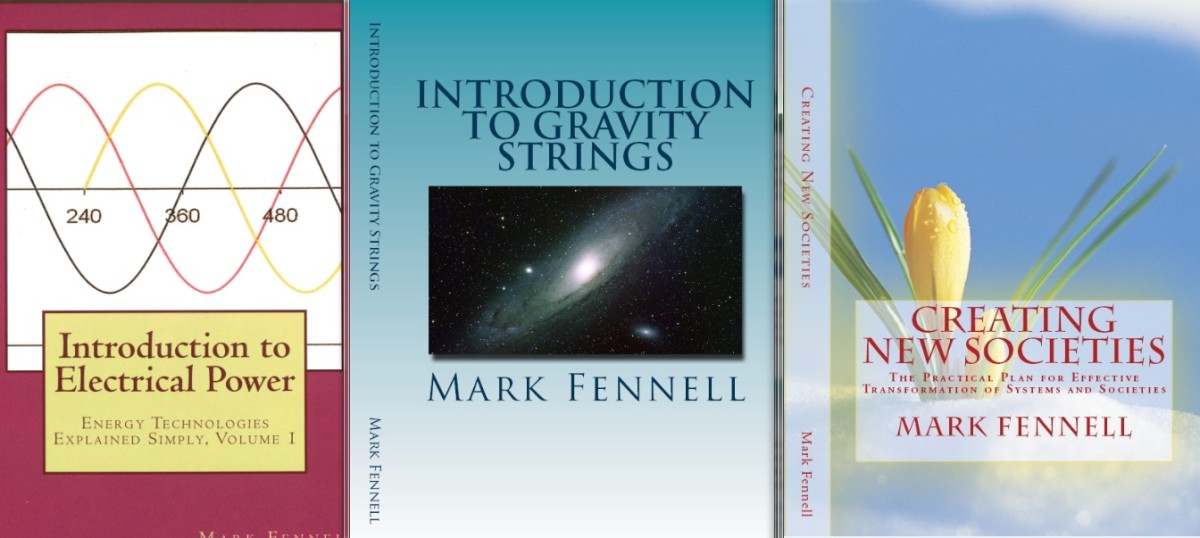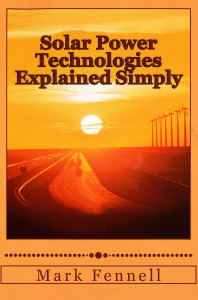Solar Power Technologies Explained Simply
Description
Solar Power Technologies Explained Simply is a practical and easy-to-read resource for anyone interested in Solar Power. This book discusses everything you need to know about solar power systems and solar cell technologies. There are three major parts to this book:
A. Overview of Solar Power Technologies, including: the primary components in the production of solar power, the basic process of the solar cell, the use of inverters, and reasons for low efficiency.
B. Practical Considerations when Installing Solar Cells, including: material choice for semiconductor, electronic configurations, sizing the array, orientation, tilt angle, and maintenance.
C. Advanced Solar Cell Technologies, including: thin films, stacking, anti-reflective coatings, surface texturing, minority carriers, and solar concentrators.
This book also provides extensive data tables, including:
- Tilt angle guidelines based on region and season
- Energy required to excite the materials of most solar cells
- Several other data tables and illustrations
Chapters Include:
- Primary components and processes of solar power
- Design choices for solar power
- Protection and Maintenance
- Orienting the solar panel for optimum efficiency
- Advanced Solar Cell Technologies
- Appendix and Index
Items Found ONLY in this Book
There are several data tables which are found ONLY in this book. You will not be able to find these anywhere else!
01. The first such table is a comprehensive guide for the optimum tilt angle of your array. This tilt angle value is based on your latitude (city names are listed alongside to help you locate). Then these tilt angles are adjusted according to season. This table alone is worth the price of the book.
02. The second unique table is a list of common materials for semiconductors (as solar cells), and the amount of energy required to excite the electrons for each material. This factor is an important design choice for solar cells.
03. The third table of interest tells us the relationships between wavelength (or frequency) ranges of electromagnetic energy, and the resulting energy value. Although this information can be found elsewhere, the table is designed to be used in conjunction with the material choice table. We can then choose the material to be responsive the specific range of electromagnetic energy.
04. Another useful item in this book is the equation to help calculate the size of your solar array. When determining the size of your array, there are many factors you can consider. Yet we would like this to be as simple as possible. Therefore, I selected an equation which I believe is a good balance between accuracy and simplicity. I also provide some examples to show you how to use the equation.
05. There are a few other interesting tables and illustrations as well. Some of the general data can be found elsewhere, however the specific data and illustrations are my own.
Research for Solar Power Publications
Details Worth Noting in This Book (Chapter by Chapter)
- The first chapter discusses the primary components and basic process of solar power. This chapter provides an overview of solar cell technologies. Topics include the basic process of solar cells, processes which limit the efficiency of solar cells, and key terminology. This part of the book also provides an overview of practical issues to consider when using solar power. Specific topics include:
- Advantages of solar cells
- Basic Process of solar cells
- Processes which can occur in a solar cell
- Efficiencies of solar cells, and how to improve
- Science of Electromagnetic Energy (light) and solar cells
- Converting DC to AC with inverters
- The Cell, the Panel, and the Array
- Overview of Practical Considerations for solar cells
- Temperature and Power Relationships in Solar Cells
- Additional Technical details and illustrations of Solar Cells.
- The second chapter discusses the various design choices for solar power. This chapter is designed to be a practical guide for helping you to understand your options, and then decide the best options for your situation. Specific topics include:
- Material choices of semiconductors as solar cell
- Joining cells electronically: series or parallel
- Inverter technologies and options
- Choosing to be off-grid or tied to the grid
- Using power as it is generated, or store for later
- Size of Array: considerations and calculations
- Batteries and Solar Power: general considerations*
*Note that details of Battery Options are discussed in Volume 1: Introduction to Electrical Power.
- The third chapter discusses protection and maintenance. Here we discuss general considerations for maintaining your solar cells. Topics include:
- Protective Coatings
- Maintenance Schedules
- Physical Support for the Arrays
- In order to get optimum use from the solar cells, the array must face the sun directly, as often as possible. Therefore, in chapter four we discuss all the options for tilting and turning the array, and thus maximizing the amount of power produced from your solar cells. Specific topics include:
- Important points for optimum array orientation
- Latitude and orientation of solar array
- Direction of Array: options and considerations
- Direction of Array: fixed or adjustable
- Tilt Angle: Ideal tilt angle for latitude and seasons**
- Tilt Angle: fixed or adjustable
- Schedules for adjusting title angle of array
**Note that a detailed table of ideal tilt angle and schedule of adjustment, per latitude and season, is in the Appendix.
- The final chapter discusses the most important of the advanced solar cell technologies. This chapter discusses the reasons for low efficiency in a solar cell, and then provides the most common methods for improving efficiency. Specific topics include:
- Possible events in a solar cell and resulting efficiency
- Preventing electron-hole pairs from recombining
- Using more of the reflected waves
- Using waves that travel through the cell
- Reducing the energy lost as heat
- Stacking solar cells
- Thin Films
- Solar concentrators use in conjunction with solar cells.
- The Appendix has a complete table for knowing the ideal tilt angle for your solar array. This angle is based on your latitude, in combination with the changing seasons. (You will not find another such comprehensive table in any other publication!)
Videos related to Solar Power

